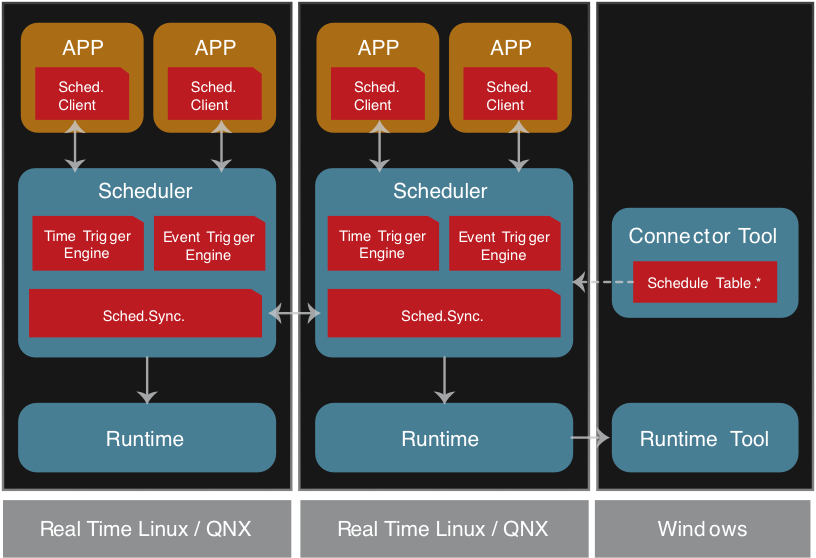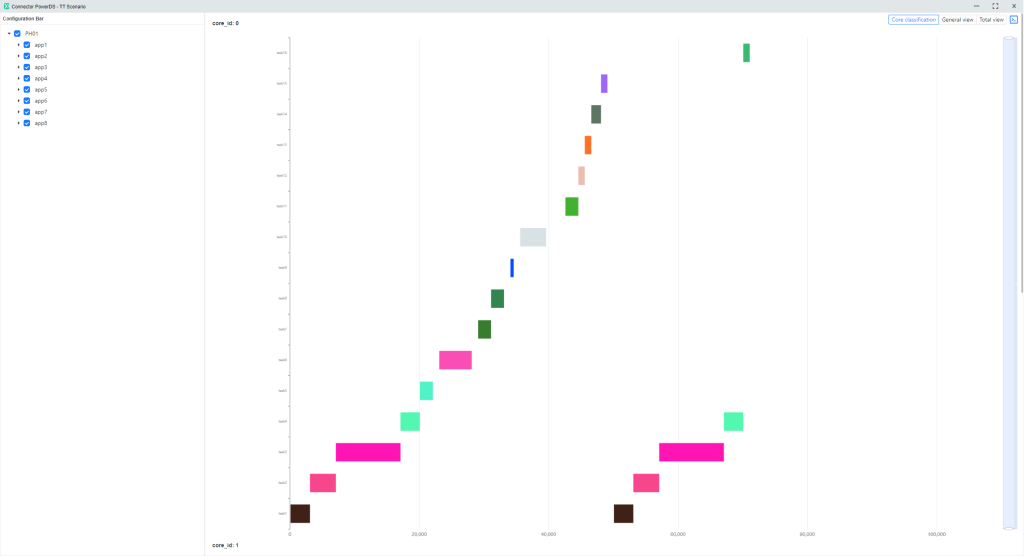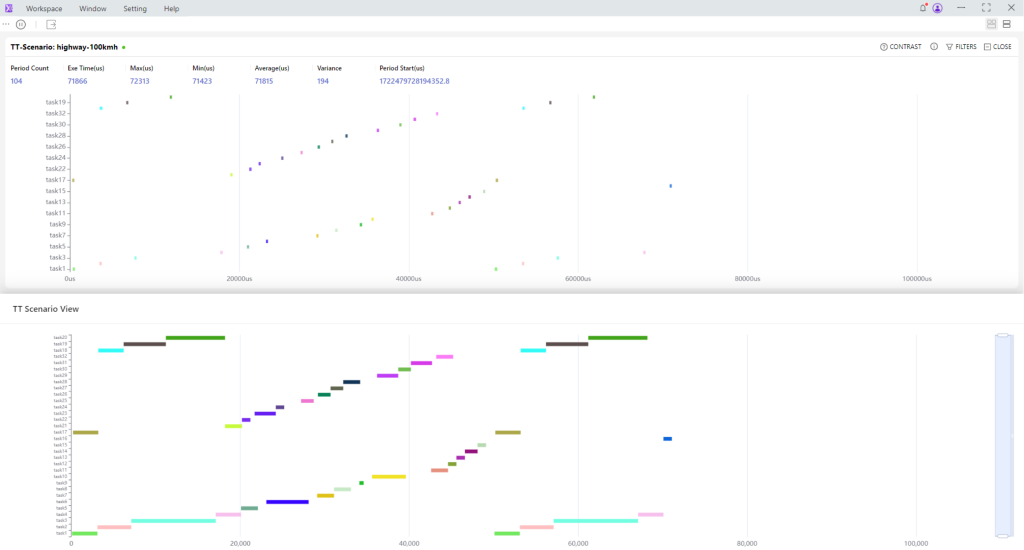PowerDS
PowerDS deterministic scheduling middleware can ensure the deterministic execution of user applications through time-triggered scheduling (TIME_TRIGGER) and event-triggered scheduling (EVENT_TRIGGER) mechanisms.
Program Overview
PowerD-Sch deterministic scheduling products provide two scheduling mechanisms: time-triggered and event-triggered. The time triggering mechanism supports tasks to be flexibly arranged on multiple nodes and executed according to different time periods, thereby maintaining the time certainty of each task link during the running of the software. The event scheduling mechanism strengthens the order and controllability of application execution and ensures that the results of the entire chain execution are as expected. By setting the task worst execution time (WCET) threshold, the error processing logic will be triggered once the task times out, thereby ensuring the stability and security of the system.

PowerD-Sch deterministic scheduling products support multi-chip cross-domain scheduling and scene switching. A unified scheduling table is generated through the arrangement of global apps and tasks, and the schedulers in each chip configure each other to achieve global scheduling. Scene switching supports switching schedules according to real-time scene changes, changing scheduling tasks and task frequencies, responding to different scenarios in a timely manner, improving system response speed, and reducing system costs.
The PowerD-Sch tool chain includes the graphical modeling tool Connector and the monitoring tool Runtime. Connector can configure tasks in all apps in deterministic scheduling scenarios and generate optimal scheduling tables through scheduling and orchestration algorithms; Runtime can not only monitor the running status of the scheduler and scheduled tasks, but also monitor the current real-time status of each host. state.

ConnectorPowerDS graphical modeling tool

RuntimePowerDS monitoring tool
Product Advantages

Task management

Resource optimization

Load balancing

Quick response

High flexibility

High security

High Reliability

Scalability
Application Scenarios

Deterministic communication gateway
Build a deterministic communication center gateway to achieve precise control of network traffic and ensure the certainty and load balancing of message transmission

Autonomous driving
Solve the load and resource conflict problems of the autonomous driving system through deterministic scheduling to ensure the smooth operation of the vehicle in complex scenarios

Industrial Control
Deterministically schedule industrial production tasks, eliminate resource contention and system bottlenecks, and improve production efficiency and safety